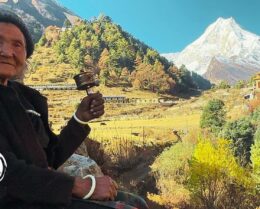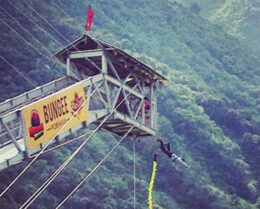Helicopter Rescue from Manang
- difficulty
- Moderate
- altitude
- 3,519m
- season
- Any season
trip overview
Helicopter rescue from Manang, Nepal, is not uncommon, particularly within the context of trekkers and climbers going through altitude sickness, accidents, or different emergencies within the place.
Manang is a popular stopover for trekkers at the Annapurna Circuit, which is thought of for its beautiful landscapes however additionally for its tough terrain and high altitudes.
Helicopter rescues from Manang are commonly coordinated through nearby government, trekking groups, or rescue companies such as the Himalayan Rescue Association. When a rescue is necessary, a helicopter is dispatched to airlift the man or woman in want of assistance to a clinical facility or a safer area wherein they could acquire proper remedy.
These rescues are frequently tough because of the high altitudes and unpredictable climate situations in the Himalayan Region. Pilots should have sizeable skill and experience to navigate the mountainous terrain and properly execute the rescue operation.
The fee of a helicopter rescue in Nepal may be quite high, and it’s typically the responsibility of the person or their travel insurance to cover the costs. However, in some cases, rescue companies or the Nepali authorities may additionally offer assistance or subsidies to individuals in need.
It’s vital for trekkers and climbers journeying Manang and other remote areas in Nepal to be accurately organized and to have travel insurance that covers emergency clinical evacuation, including helicopter rescues, to make certain they can get hold of well-timed help if needed.
How Will Mission Carry Out
Prioritizing rescuing a group of hikers exposed on a trail without a permanent shelter, the rescue team moved to the rescuer. It carried out in-extremis planning with the Rescuer.
Using satellite communication gear that was previously provided, the rescuer will stay in regular communication with the exposed tourists. An emergency doctor was included in the planning and communication process to monitor their status and offer direction to the tourists while the rescue team planned a helicopter evacuation.
The first response rescue team set up shop in Manang, kept an eye on the weather from the ground, and helped arrange for the group’s entire helicopter extraction when there was a window of opportunity for the weather.
Challenges Faced by the rescuer
Hundreds of travelers are impacted at the same time and location by natural catastrophes and extreme weather. The infrastructure for transportation, communications, and the availability of rescue personnel are all severely strained by this.
Nepal’s weather is very dynamic and subject to sudden changes for the better or worse.
Because of its isolated location, the Manang region of Nepal can only be reached quickly by rotary-wing aircraft, leaving passengers vulnerable to severe weather.
Securing helicopter transportation for large-scale events can be difficult due to its average payload limit of 4–6 passengers, potential financial limits, and movement restrictions caused by fuel limitations.




